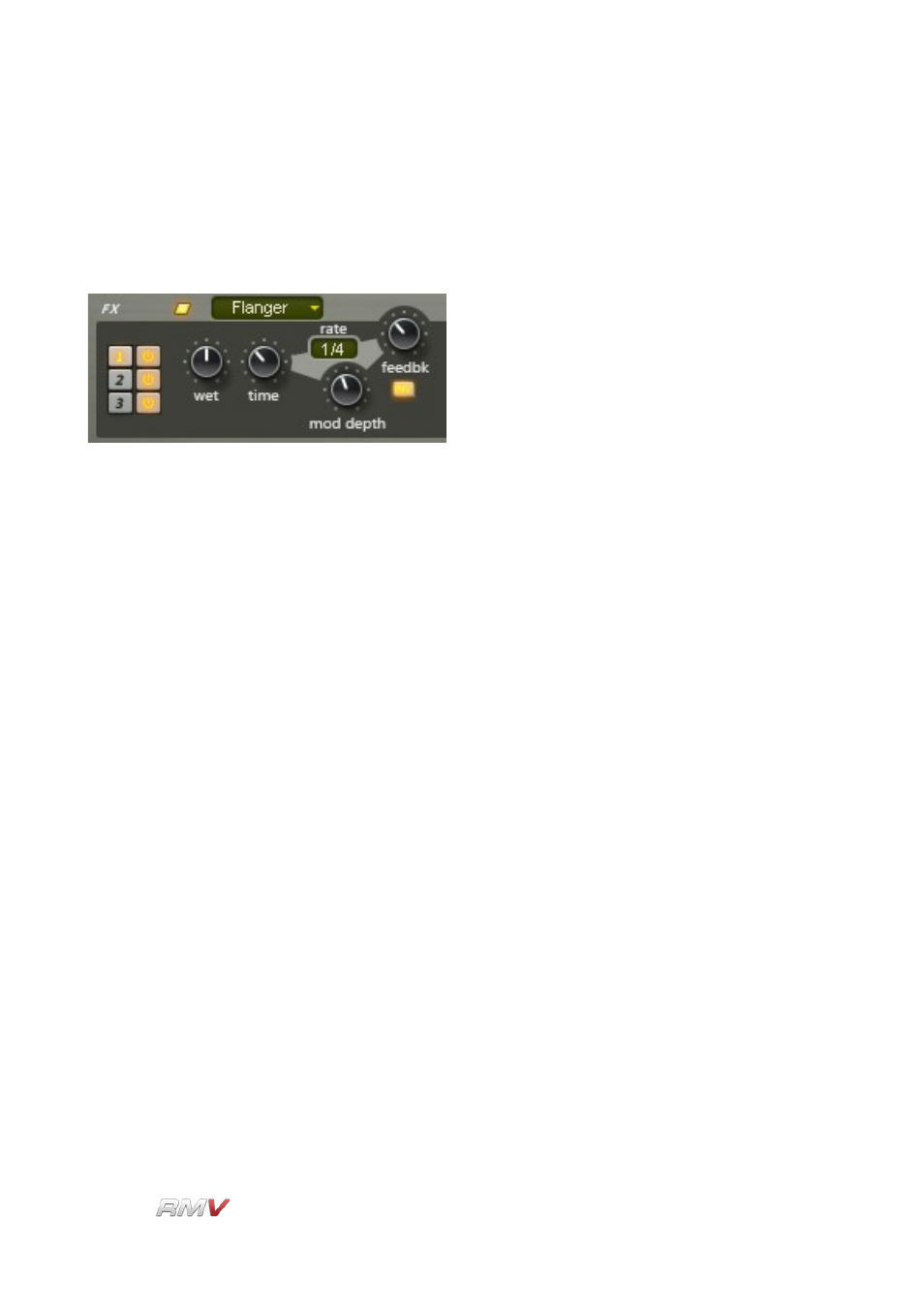Flanger – LinPlug RMV User Manual
Page 95

Signal Path
Flanger
The Flanger effect can be used to create the classic flanging sound produced by using two
analog tape machines playing back the same signal but with small (and changing)
differences in the playback speed of the machines.
The RMV's Flanger features controls for Wet, Time, Rate, Mod (Modulation) Depth,
Feedback and Invert.
Wet:
The Wet control is used to set the balance between the processed
"wet" signal (that is, the “flanged” signal) and the original
unprocessed "dry" signal.
Time:
The Time control is used to set the time of the flanger's delay, which
represents the delay time between the original (tape machine 1)
signal and the delayed (tape machine 2) signal.
Rate:
The (Modulation) Rate control sets the speed of the flange effect
(that is, the speed of the cyclic changes of the two tape machines).
The rate is set as a fraction of the song tempo using the “Sync”
popup menu (see Appendix B for the range of possible sync
settings).
Mod Depth:
The Mod (Modulation) Depth control is used to set the depth of the
flanging effect. The higher the setting, the more pronounced the
effect.
Feedback:
The Feedback control is used to feed the processed signal back into
the input of the effect producing a richer, more pronounced flanging
effect.
Invert:
The Invert control inverts the processed signal's phase against the
original signal, producing a subtly different flanging sound.
LinPlug
Reference Manual 5.0.1
95